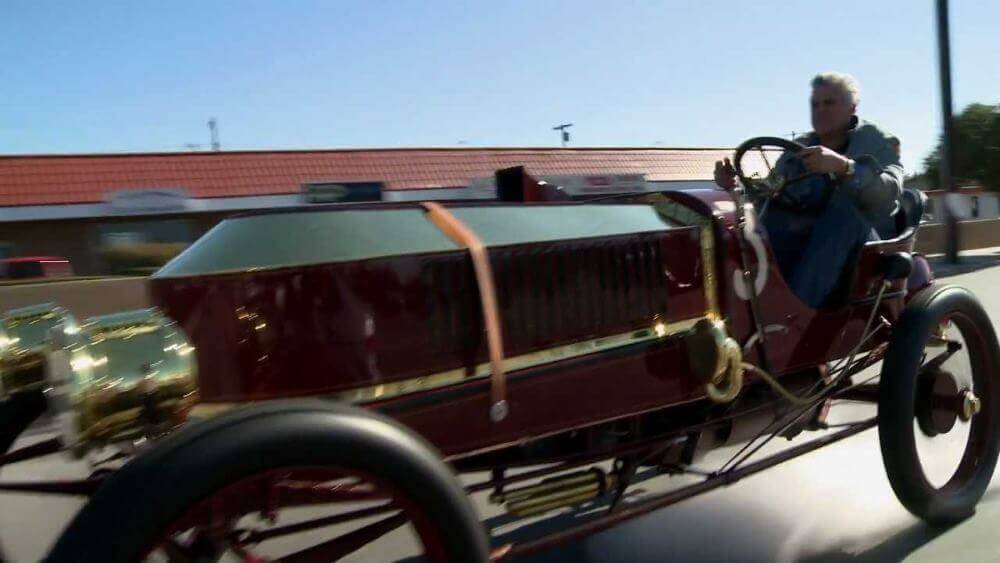1906 Stanley Steamer Vanderbilt Cup Racer

The descriptions of the Classic Cars in the Directory were partly generated or supplemented with the help of artificial intelligence (AI). The content may occasionally not always be entirely accurate or factually correct despite careful checking.
The Stanley Steamer Vanderbilt Cup Racer 1906 is an iconic vintage racing car that was built by the Stanley Motor Carriage Company between 1906 and 1910, and is widely regarded as one of the most advanced and technologically sophisticated vehicles of its time. This unique racer was specifically designed for the Vanderbilt Cup race held annually on Long Island, New York, and was named after William K. Vanderbilt Jr., the founder of the race.
One of the most distinctive features of the Stanley Steamer Vanderbilt Cup Racer 1906 is its unconventional powertrain, which is based on a steam engine. Unlike conventional internal combustion engines, which rely on the combustion of fuel and air to generate power, a steam engine works by heating water to create steam, which then drives pistons that power the wheels. In this case, the steam engine used in the Vanderbilt Cup Racer is a twin-cylinder compound engine, which means that it has two sets of pistons that work together to drive the car.
The engine is fueled by gasoline, which is burned in a small boiler to heat the water and generate the steam. The boiler is made of seamless steel and is designed to withstand high temperatures and pressures. To ensure that the boiler is always filled with water, the car is equipped with a large tank located behind the driver's seat. The tank holds about 25 gallons of water and is pressurized to prevent the water from boiling and spilling over. The tank is also insulated to keep the water from cooling too quickly and losing its steam-generating potential.
The steam engine in the Vanderbilt Cup Racer is able to produce over 150 horsepower, which is transmitted to the rear wheels through a three-speed transmission and a chain drive. This gives the car a top speed of around 80 miles per hour, which was incredibly fast for its time. To help control this speed, the car is equipped with a set of large, wooden-spoked wheels that are fitted with special "non-skid" tires. These tires have a rough surface that helps the car grip the road and prevent skidding during high-speed turns.
The chassis of the Vanderbilt Cup Racer is made of a lightweight steel alloy and is reinforced with several cross-members to provide additional strength and rigidity. The car also features a unique suspension system that uses a set of leaf springs to absorb shocks and keep the car stable during high-speed maneuvers. The brakes on the car are also state-of-the-art for their time, using a set of large, external contracting bands that are wrapped around the rear wheels to slow the car down.
The interior of the Vanderbilt Cup Racer is spartan and purpose-built, with a single seat for the driver and minimal controls. The steering wheel is mounted on a vertical column and is positioned at a slight angle to the driver. The car also features a unique set of gauges that monitor the pressure and temperature of the steam engine, as well as the level of water in the tank. To accommodate the high speeds of the car, the driver is also fitted with a set of goggles and a leather cap to protect their eyes and head from wind and debris.
Overall, the Stanley Steamer Vanderbilt Cup Racer 1906 is a truly remarkable vehicle that was ahead of its time in terms of technology and performance. Its unconventional steam engine, advanced suspension system, and state-of-the-art brakes made it a formidable contender on the racetrack and helped establish the Stanley Motor Carriage Company as a leader in automotive engineering. Today, the Vanderbilt Cup Racer is a cherished part of automotive history and a testament to the ingenuity and innovation of its designers and builders.
Milestones
- Design and development of the Stanley Steamer Vanderbilt Cup Racer begins in early 1906 - Construction of the car is completed in May 1906 - Testing and tuning of the car occurs throughout the summer of 1906 - On September 22, 1906, the Stanley Steamer Vanderbilt Cup Racer competes in the inaugural Vanderbilt Cup race on Long Island, New York - The car completes the 297 mile race in just under 10 hours, setting a new record for steam-powered vehicles - The Stanley Steamer Vanderbilt Cup Racer goes on to compete in numerous other races over the next few years, solidifying its place in automotive history as an early example of high-performance steam-powered vehicles.Technical
- The Stanley Steamer Vanderbilt Cup Racer was built in 1906 by the Stanley Motor Carriage Company in the United States. - The car is powered by a twin-cylinder steam engine, which produces around 30 horsepower. - The engine uses a flash boiler, which combines water and fuel to create high-pressure steam instantly. - The car's body is made of lightweight aluminum, with a polished finish that reflects the sun and makes it easier to see on the racetrack. - The Vanderbilt Cup Racer has a top speed of around 70 miles per hour, making it one of the fastest cars of its time. - The car's design incorporates a low center of gravity, which helps to keep it stable during high-speed turns. - The car uses a chain drive to transmit power from the engine to the wheels, with the rear wheels being driven directly. - The suspension system is made up of a combination of coil springs and curved wooden beams, which help to absorb shocks from bumps in the road. - The steering system is a conventional design, using a hand-operated wheel to turn the front wheels. - The brakes on the car consist of a contracting band that wraps around the drivetrain, which slows the car down by applying friction to the engine's flywheel.